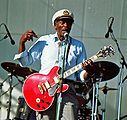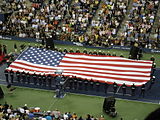User:ProfDEH/Icons of American Culture

Icons of American culture encompass many kinds of cultural expression. Iconic status is hard to define but readily recognized as symbolizing the culture, history and heritage of the United States. Images, music, historic events and legends, vehicles, places and ideas may all be symbolic of the American way of life, its roots and the contemporary national identity. Icons deal not just with nostalgia, although that is an important component. The United States developed as a melting-pot of different cultures, and symbols of the new nation played a vital part in developing a sense of unity as a nation.[1] In the twentieth century, regardless of political reality, American culture influenced every country in the world by exporting powerful symbols of unity and gratification: a comfortable life with many desirable possessions. In the modern world iconic images remain hugely important.
Themes
[edit]This article is not a list of icons, but an outline for expansion.
-
Liberty: "Give me your tired, your poor, your huddled masses yearning to breathe free". America as a refuge from poverty and religious persecution: despite stringent immigration control, the image of America as a place of refuge persists.
-
The home and folk art: 'As American as apple pie'. Apple pie is common worldwide, but connotations of family and home are strictly local. Apples are not native to North America, and were therefore prized by the early settlers.
-
Untamed wilderness: a fresh start with limitless possibilities.
-
The pioneers: westward expansion, prevailing over hardship.
-
The Wild West, where inherited civilized values regulated a society living with extreme change and primitive conditions.
-
The Depression and Prohibition: surviving adversity under different circumstances.
-
Consumption and commerce: the biggest show on earth. Bigger and better.[2]
-
Vehicles and transportation: Henry Ford pioneered the large-scale production line, and thereby the affordable personal automobile.
-
Buildings and places: Brooklyn Bridge in New York City. Images of America are widely promoted by film and television.[3]
-
Superior force: the US military, instantly recognizable.
-
Humvee: the popularity of the civilian Hummer is no coincidence. Film stars and rock music stations can afford the real thing, the Hummer H1: Arnold Schwartzenegger was the first customer to own a civilian version of the military model.[4].
-
Gangsters and outlaws: the chopper, once representative of rebellion (as in Easy Rider), now a full-blown American icon.
-
The urban jungle[5]: danger and decay. The 'hip city' as mythologized by Chester Himes among others.[6]
-
Literature: 'To Kill a Mockingbird' by Harper Lee, still studied in schools[8] represents fairness in conflict with prejudice.
-
Music: Chuck Berry in concert, 1997. The development of black music into jazz and then rock and roll established US artists in the forefront of popularity worldwide.
-
The flag, a national obsession.
See also
[edit]Notes
[edit]- ^ John Belton, American Cinema/American Culture: "[In the 20th century] a coherent national identity had to be maintained (or re-created?) and it was precisely the American cinema that served as a kind of social bridge".
- ^ Icons of American Popular Culture: From P.T. Barnum to Jennifer Lopez, by Robert C. Cotrell, M.E. Sharpe 2009. ISBN: 978-0765622983. See 'Democratic Showmen: James Gordon Bennett and P.T. Barnum'
- ^ Icons of American Architecture [Two Volumes]: From the Alamo to the World Trade Center, by Donald Langmead, Heinemann Educational Books ISBN: 9780313342073. See Vol 1 Chapter 3
- ^ Deseret News (Salt Lake City), May 13, 2006: Hummer H1 is history — GM won't make model after 2006
- ^ Cities of Tomorrow: An Intellectual History of Urban Planning and Design in the Twentieth Century by Peter Hall: WileyBlackwell 2002, ISBN 978-0631232520
- ^ Chester Himes, the hip city.
- ^ "Astaire and Rogers: Icons of American Screen Romance", keynote lecture synopsis, Austrian Association for American Studies
- ^ To Read a Mockingbird. Library Journal (New York) 129 (14): 13.. 1 September 2004
External references
[edit]- Online essay on American icons (extract)
- [http://books.google.co.uk/books?id=dvag7r4d5K4C&pg=PA2&lpg=PA2&dq=icons+of+american+culture&source=bl&ots=OtL-1InyUy&sig=33jr0lESd1dYZDUGNtp8l6i1yP4&hl=en&ei=Cet5SrOOE4XT-Qaam9nIBQ&sa=X&oi=book_result&ct=result&resnum=2#v=onepage&q=&f=false
Extract from Robert Johnson, Mythmaking and Contemporary American Culture (Music in American Life) by Patricia Schroeder (Hardcover - 31 Aug 2004) ISBN: 978-0252029158. "For Emerson, representative characters are model citizens who embody cultural ideas"]
- [http://hss.fullerton.edu/amst/thesisabstracts.asp California State University, Fullerton: Synopsis of thesis on cars as icons in American culture.
- [http://www.foxnews.com/story/0,2933,219864,00.html Fox News, Mecca-Cola and other versions of iconic products.
- American Icons: An Encyclopedia of the People, Places, and Things that Have Shaped Our Culture by Susan Grove Hall (Editor), Greenwood Publishing Group, Incorporated. ISBN: 9780275984212.
- The Hamburger: A History (Icons of America), by Josh Ozersky, Yale University Press 2008. ISBN: 978-0300117585.





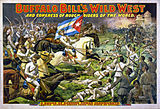
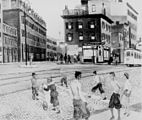
![Consumption and commerce: the biggest show on earth. Bigger and better.[2]](http://upload.wikimedia.org/wikipedia/commons/thumb/f/f5/Barnum_%26_Bailey_greatest_show_on_Earth_poster.jpg/153px-Barnum_%26_Bailey_greatest_show_on_Earth_poster.jpg)
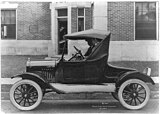
![Buildings and places: Brooklyn Bridge in New York City. Images of America are widely promoted by film and television.[3]](http://upload.wikimedia.org/wikipedia/commons/thumb/8/88/Currier_and_Ives_Brooklyn_Bridge2.jpg/160px-Currier_and_Ives_Brooklyn_Bridge2.jpg)

![Humvee: the popularity of the civilian Hummer is no coincidence. Film stars and rock music stations can afford the real thing, the Hummer H1: Arnold Schwartzenegger was the first customer to own a civilian version of the military model.[4].](http://upload.wikimedia.org/wikipedia/commons/thumb/6/65/Humvees_in_Iraq.jpg/160px-Humvees_in_Iraq.jpg)

![The urban jungle[5]: danger and decay. The 'hip city' as mythologized by Chester Himes among others.[6]](http://upload.wikimedia.org/wikipedia/commons/thumb/4/4a/Looking_northeast_at_Third_Avenue_Elevated_over_Cross_Bronx_Expressway.jpg/160px-Looking_northeast_at_Third_Avenue_Elevated_over_Cross_Bronx_Expressway.jpg)
![Hollywood: the film industry has produced more icons than any other branch of American culture.[7]](http://upload.wikimedia.org/wikipedia/commons/thumb/3/32/Hollywood_Bl_6100.JPG/160px-Hollywood_Bl_6100.JPG)
![Literature: 'To Kill a Mockingbird' by Harper Lee, still studied in schools[8] represents fairness in conflict with prejudice.](http://upload.wikimedia.org/wikipedia/commons/thumb/e/ee/NonFreeImageRemoved.svg/109px-NonFreeImageRemoved.svg.png)
